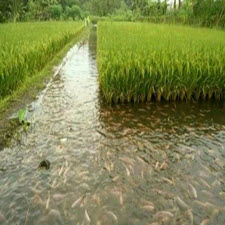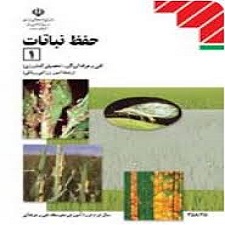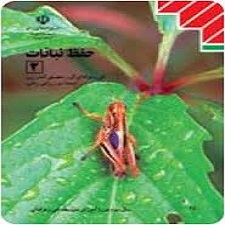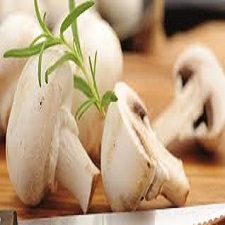توضیحات
چکیده
یکی از مهمترین تهدیدات برای پایداری تولیدات کشاورزی در طول زمان، کاهش عملکرد بهره وری خاک است. شیوه های عملیات خاک ورزی وآبیاری، مهم ترین فعالیت های مخربی هستند که برپایایی، دوام و کیفیت خاک تاثیر می گذارند. با این حال، این مشکلات در نواحی خشک و نیمه خشک دو چندان می باشد ، از جمله تخلیه آب های زیرزمینی برای کشاورزی آبی و تخریب خاک به دلیل استفاده از آب های زیرزمینی شور. با توجه به افزایش روز افزون جمعیت و نابرابری سرعت آن با تشکیل خاک های حاصل خیز و کاهش ذخایر آب و تداوم دوره های خشکسالی و تغییرات اقلیم و تبعات سوء آن به ویژه در مناطق خشک و نیمه خشک، همچنین افزایش هزینه های استحصال و کاربرد آب برای آبیاری در مناطق خشک از مواردی می باشد که در سطح جهانی متخصصین کشاورزی را به تفکر و تعمق واداشته است تا از روش های نوین کشاورزی که کمترین آسیب نسبت به خاک و آب را دارند، بهره گیرند؛ بنابراین لزوم بهره گیری از روش های کشت بدون خاک که با کمترین مصرف آب همراه باشد به شدت احساس می شود. بر این اساس استفاده از آخرین فن آوری های کشاورزی بدون خاک، سیستم های آکواپونیک، لازم و ضروری است. آکواپونیک در واقع زراعت بدون خاک و پرورش آبزیان به طور همزمان، که حاصل ادغام آبزی پروری و کشت هیدروپونیک است، می باشد. در آکواپونیک ها یک گروه باکتری نیتروفیتی ابتدا آمونیاک حاصل از فضولات آبزیان را طی فرآیند نیتریفیکاسیون به فرم قابل جذب آن توسط گیاهان(نیترات) تبدیل می کنند وسایرمواد مغذی از قبیل کلسیم، پتاسیم، منیزیم، و آهن از تجزیه مواد جامد باقی مانده از تغذیه آبزیان که توسط دسته دوم از باکتری های هتروتروف انجام می گیرد، در اختیار گیاه قرار داده می شود. این سیستم با کنترل شرایط محیطی(دما، pH ،DO ، سختی آب، آمونیاک کل) برای همه اجزاء زنده آن، به تعادل می رسد.
ABSTRACT
One of the most important threats to sustainability of agricultural production over time is the decline in soil productivity. Tillage and irrigation practices are the most important destructive activities that affect the stability, durability and quality of the soil. However, these problems are two-fold in dry and semi-arid areas, including groundwater depletion for aquatic agriculture and soil degradation due to saline groundwater use. In view of the increasing population and its rapid inequality by the formation of fertile soils and the reduction of water reserves and the continuation of periods of drought, climate change and its adverse effects, especially in arid and semi-arid regions, as well as increased costs of extraction and application of water For irrigation in arid areas, global agriculture experts have been thinking and thinking about using modern agricultural methods that have the least damage to soil and water; therefore, the use of cultivation methods Without soil that comes with the least water intake, it is very felt. Accordingly, the use of the latest agricultural technologies without soil, aquatic systems, is necessary. AquaPonic is in fact an agriculture without soil and aquaculture simultaneously, which is the result of the integration of aquaculture and hydroponics cultivation. In acupoints, a nitrophytic group initially converts ammonia from aquatic waste into nitrification in its absorbable form by plants (nitrate), and nutrients such as calcium, potassium, magnesium, and iron from decomposing the remaining solids from nutrition The aquaculture is carried out by the second group of heterotrophic bacteria. This system is balanced by controlling environmental conditions (temperature, pH, DO, water hardness, total ammonia) for all its living components.
Year: ۲۰۱۸
Publisher : First International Conference and Third National Conference on Sustainable Management of Soil and Environment Resources
By : Parviz Alizadeh, Hamid Soodayizadeh
File Information: English Language/ 7 Page / size: 537 KB
Only site members can download free of charge after registering and adding to the cart
سال : ۱۳۹۷
ناشر : اولین همایش بین المللی و سومین همایش ملی مدیریت پایدار منابع خاک و محیط زیست
کاری از : پرویز علیزاده ,حمید سودائیزاده
اطلاعات فایل : زبان فارسی / 7 صفحه / حجم : KB 537










نقد و بررسیها
هنوز بررسیای ثبت نشده است.